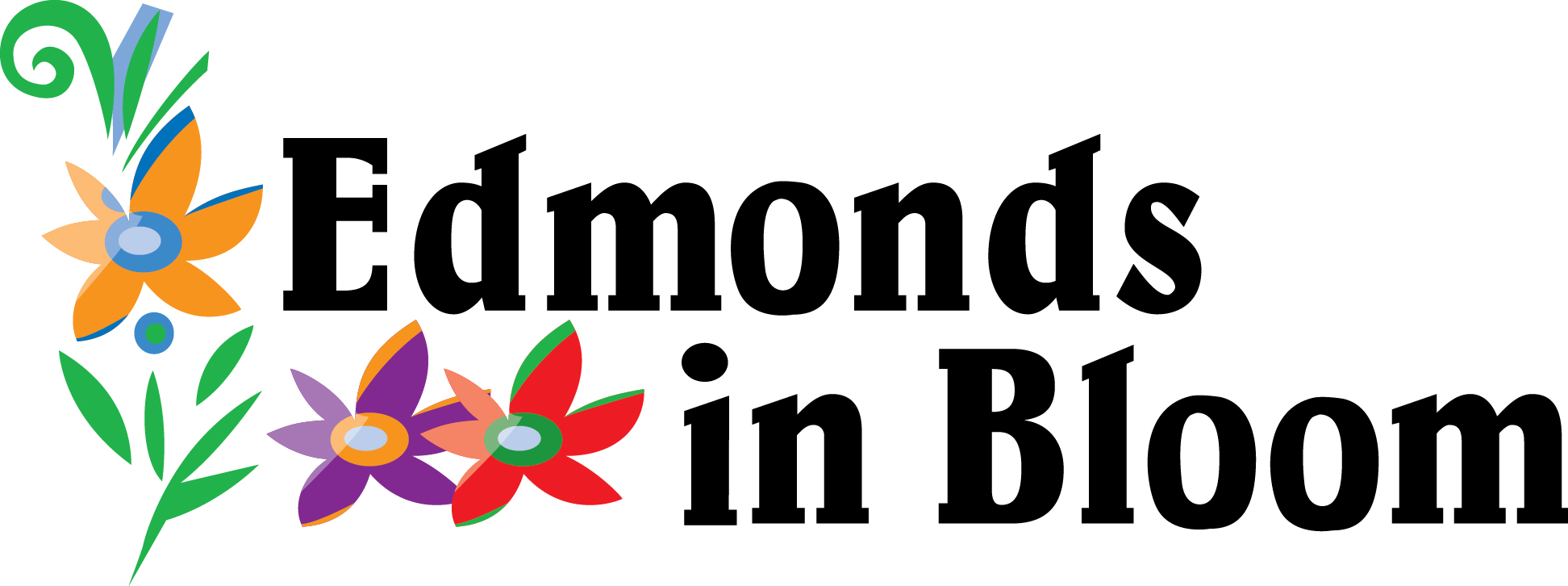Grow Heirloom Flowers from Seed in Edmonds
Grow Heirloom Flowers from Seed
Heirloom flowers are not easy to define precisely, but you know them when you see them. Flashy spikes of Hollyhock rule the early summer garden; fragrant Four O’Clocks bring a smile at day’s end; the glorious spires of Larkspur blossoms light up the spring garden. Some call heirloom flower “pass-along plants,” because they are open-pollinated and you can save their seed, so once you have established a population in your garden, it’s a pleasure to save and package their seeds in pretty envelopes to pass along to gardening friends.
Treat yourself to these pleasures from the past. Although harder to find, as started plants in garden centers, Bachelor’s Buttons, Bells of Ireland, and their various and sundry aptly named co-horts are easily grown from seed. For the price of a packet of seeds, these lovely, easily grown and often fragrant flowers will make your garden reign supreme— like regal plumes of foxgloves on a brilliant June morning.
These Time-honored Beauties will make your Garden Glow
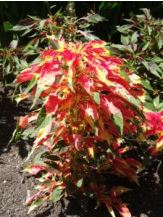 |
Joseph’s Coat (Amaranthus tricolor) can be sown directly in a sunny location in the early summer garden. It grows quickly and will reach 1 to 4 feet in height. This brilliant foliage plant can be used as a spectacular edging, or as a specimen plant in a mixed border. |
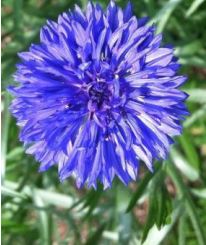 |
Bachelors Buttons (Centaurea cyanus), traditionally blue, come in a range of cool colors, and are dazzling in a bouquet. Sow seed directly in a sunny spot in early spring, or in fall, and thin the seedlings so they stand about 6 inches apart. Plants can reach 3 feet in height and are most effective in a mass. Stake them early on to prevent flopping. |
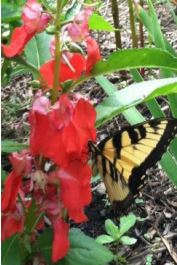 |
Balsam Impatiens (Impatiens balsamina) was a popular garden flower 100 years ago, but the 18-inch beauty is an unusual garden sight today. It grows easily from seed sown in spring, adapts to sun or shade, and attracts butterflies. And it has an interesting feature, which makes it a great choice for children’s gardens: when you squeeze mature seedpods, they explode! |
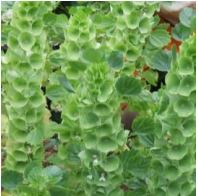 |
Bells of Ireland (Moluccella laevis) send up 2-foot spires loaded with green, bell-shaped calyxes. As they grow taller the spires tend to bend in curious directions, which makes them interesting in fresh and dried flower arrangements. Sow the seed directly in a sunny location in early spring, or in fall. Thin plants so they are 8 to 12 inches apart. |
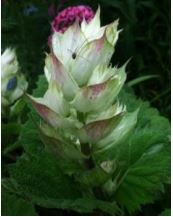 |
Clary Sage (Salvia sclarea) grows to 3 feet in height, and about 18 inches in width, so give it space. It is a biennial plant; the luminous flowers will not form until its second year in the garden. Flowers and leaves are highly aromatic, and can be used to make an essential oil. Sow seed in late spring, and, as seedlings grow, move them around to spaces that can accommodate this substantial and striking plant. |
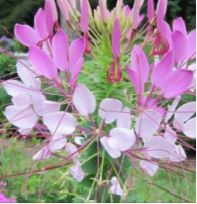 |
Cleome (Cleome hassleriana) is a dramatic summer presence. Seed can be sown in the spring or fall garden, in sun or light shade. As the weather heats up, plants zoom to 4 feet or more in height, and the characteristic spidery seedpods appear. Hummingbirds love them! |
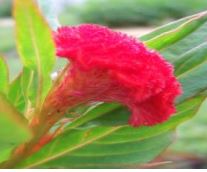 |
Cockscomb (Celosia cristata) is remarkable for numerous reasons: hefty, brain-shaped flowers; hot colors; 3-foot height. Fascinating in the garden and in the vase, it is easily started from spring-sown seed. Space plants 8 to 12 inches apart, and stake them as they grow to keep the heavy flower heads from bending to the ground. |
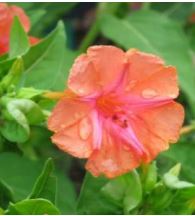 |
Four O’Clocks (Mirabilis jalapa) got their name because the flowers open in the evening, and close sometime the next morning. Plant the seed in spring in sun or part shade, then just sit back and let them grow into shrub-like 2- to 3-foot plants. Flowers are lightly scented and attract hummingbirds. |
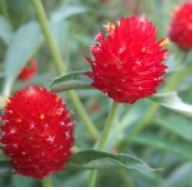 |
Globe Amaranth (Gomphrena haageana) is available today mainly as a 1-foot dwarf, but in the 19th century it was a hefty, 30-inch plant. The advantage of growing tall varieties, such as ‘Strawberry Fields’ is that the long stemmed flowers can be hung and dried for arrangements. Seed can be started indoors, and set out in late spring. |
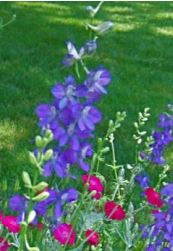 |
Larkspur (Consolida ajacis), an annual version of the famously finicky delphinium, is easy to grow and even easier to love. Sow in a sunny spot in early spring, or in fall, and thin to suit as seedlings appear. The purple spires reach 4 feet in height, and mix beautifully with rose campion, another easy-from-seed beauty. |
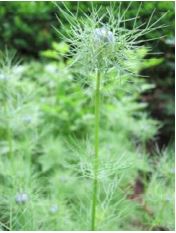 |
Love in a Mist (Nigella damascena) is romantically beautiful at every stage of its growth. It is ethereal in bud, elegant when the delicate purple flowers appear, and interesting when flowers develop into striped, balloon-like pods. Sprinkle the seed among perennial flowers in spring or fall, and enjoy the combinations. Plants grow to about 2 feet in height. |
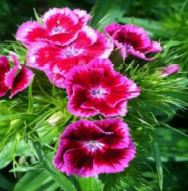 |
Sweet William (Dianthus barbatus) symbolizes gallantry in the Victorian Language of Flowers. In the garden it offers beauty and an intoxicating fragrance. Sow this biennial directly in the garden in summer, in sun or part shade, and it will bloom the following spring and summer. Plants range in height from 1 to 3 feet. |
 |
Scarlet Runner Beans (Phaseolus coccineus) are fast growing, beautiful, and edible. ‘Painted Lady’, a bicolor heirloom variety, requires a trellis that can accommodate its 10-foot height. Sow seeds in late spring in full sun, and watch it climb. Hummingbirds love the nectar produced by the showy blooms. |
 |
Zinnias (Zinnia elegans) are readily available in tall and short forms, with many-shaped flowers. But the heirloom variety ‘Lillyput’, with its small beehiveshaped blooms, is a rare garden center sighting. Introduced in the late 19th century, the disease-resistant 2-foot plants produce a profusion of perky pom-poms, and perform as well as or better than modern hybrids. |
